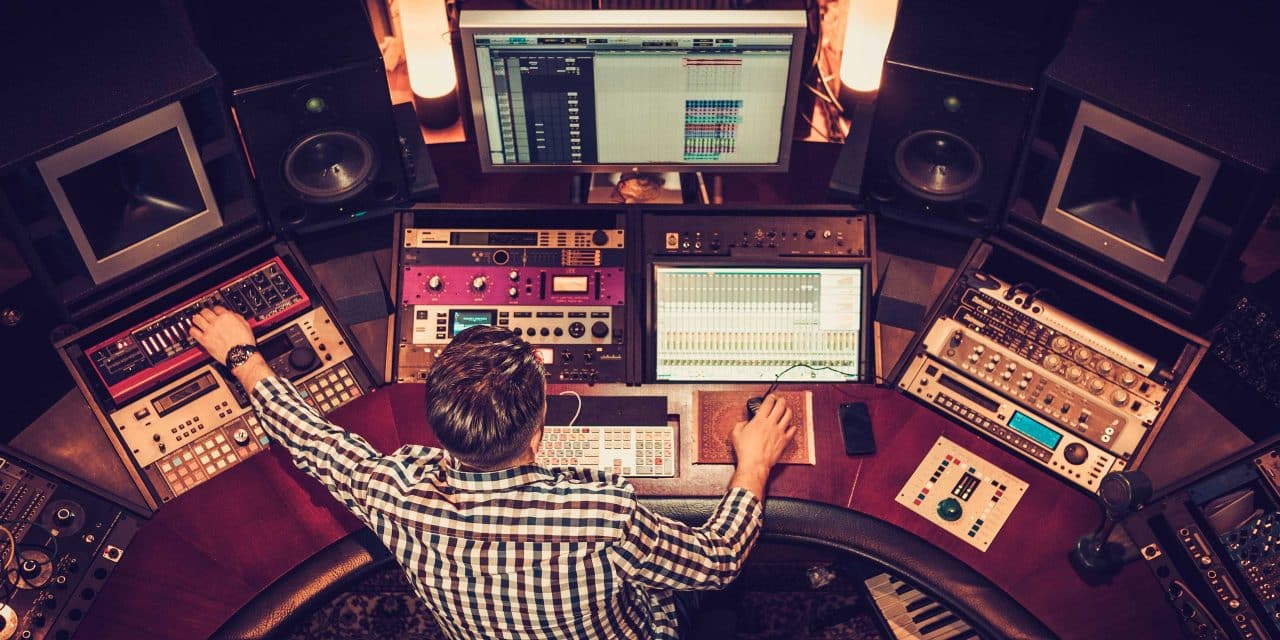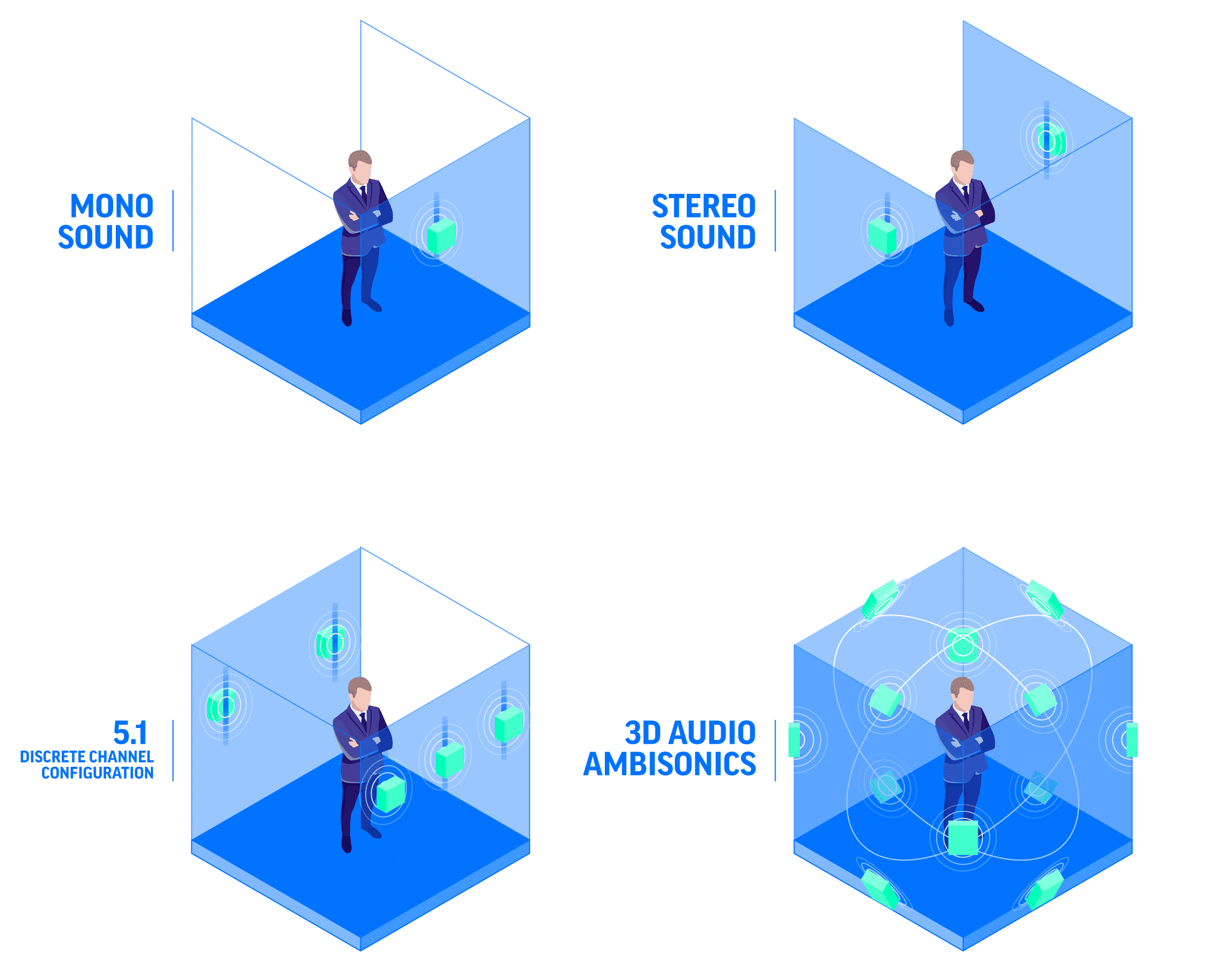VRTL to Launch Spatial Sound Course
Spatial sound (also known as spatial audio) is a way of creating immersive sound in a 360° sphere around the listener. It’s used as a way to power up the story you want to tell whether it’s in VR, 360° content or even standard video and radio.
We believe that spatial sound will completely change the way we consume and interact with audio. However, we recognize that producing spatial sound is challenging; the tech is still fresh, full of bugs and far away from being consumer-friendly.
Well, that’s exactly why we’re launching our brand new Spatial Sound course! We hope to demystify and simplify the technology and bring you all the tools you need in order to start working in the field.
In this post, we’ll explain everything you need to know about spatial sound and how our course can help you explore this uncharted territory full of gold.
What is Spatial Sound?
There are two forms of spatial sound:
Binaural – the type of sound used in headphones.
Object-based – the type you’d hear when listening to a loudspeaker or watching television.
The goal of spatial sound is to capture everything that the viewer needs to hear and let them experience the sounds around them, exactly as they would if there were seated in the midst of the action.
Spatial sound can be hugely beneficial for drawing your audience in and capturing their attention. Even if they can’t describe what spatial sound is, they’ll recognize it instantly when they hear it. That’s the importance of spatial sound: it’s a powerful tool for storytelling that is rapidly gaining traction.
Introducing VRTL’s brand new Spatial Sound course!
We’re launching a brand new spatial sound course that will give you a broad perspective on the whole field of spatial sound and will focus on the tools and methods you need in order to get the work done.
Our course will be taught by Nir Netzer, a renowned Virtual Reality director working out of Los Angeles, California. Nir has directed 360° video for DreamworksTV, NBC and many more.
If you’re ready to join us on the front line and build this new world of immersive sound, check out the full course details below!
WHO IS THIS COURSE FOR?
Our course caters to everyone from filmmakers to sound engineers and even rank beginners. We treat all participants as one because the world of VR is completely different than traditional 2D, and so are the work methods.
We designed the course to be easily accessible, so don’t worry if you’re starting from zero on some fronts – we’ll help you build your knowledge and skills and get the most professional results.

What subjects are included?
- How to capture 360° sound on set
- How to produce a professional mix
- How to export and merge the sound with video
- How to think on set
- Learn how to use software
We’ll teach you everything you need to know about formats, channels, plugins, and more! We’ll show you the difference between Ambix and Quad-binaural sound and explain all the available tools in the market. You’ll get a complete guide to new terminology and quickly be introduced to what really matters.
1. How to think on set
Recording sound on a 360 set is completely different than anything you may have learned in film school. But don’t sweat; our course will teach you all the tricks, techniques and methods for getting what you really need while on set.
2. Mixing spatial sound
We’ll teach you how to work with the FB360 workstation, Hear360 and Envelop plugins, on Reaper, Pro-Tools, Premiere, and Ableton software. We’ll also touch on work methods in Unity. And we’ll go over all the details and bits you’ve got to know from import to export. We realize that people of all experience levels, from newbie to pro, will join our course, so we designed it to let everyone work at their own level and pace.
3. Spatial sound microphones
We will focus on the Zoom H2N and 8Ball sound recorders and teach you how to use them. We’ll also explain the different kinds of mics and how to use them. You’ll hear plenty of examples so you can put your skills to the test as you learn!
To record spatial audio, you need to use a pair of microphones that replicate the perspective from which our ears hear sounds.
There are two main ways to do this:
Binaural capture and delivery, and Ambisonic capture and delivery
To capture binaural spatial sound, you have two main options:
Binaural heads, and
Omni-binaural mics

Binaural heads
Serious productions use specially created dummy heads, complete with silicone ears – and a microphone in each ear. Known as binaural heads, these heads can record binaural sound to replicate just what the listener would hear if they were seated in the room during the recording.
Omni-binaural mics
Omni-binaural mics can capture binaural sound without needing it to be synthezised. Companies such as HEAR360 produce mics that can bake the spatial audio cues are into the original recording so that what the viewer hears will always match perfectly with what they see.
To record ambisonic spatial sound, your two main options are:
Ambisonic mics, and
Portable recorders
Ambisonic mics
These mics have four (or more) cardioid microphones pointed in different directions. They require a special software decoder to covert the mic signals so that the viewer can hear things that are in front of, or behind them.
Field recorders
Portable recorders known as field recorders are often used with 360° cameras as they can use their built-in ambisonic microphones to capture audio relative to the camera position.
The drawback of ambisonic recordings is that they require synthesis to be spatialized. The audio from the mic or recorder must be converted to B-Format first. This is then fed through HRTF filters to let this listener hear the spatial sound. This approach means that you lose control as you have no sway over how a platform’s HRTF filters sound.
Our course will help you explore the benefits and drawbacks of each type of recorder and give you a full overview of the best mics on the market!
FREE COURSE VITAL KNOWLEDGE ABOUT VIRTUAL REALITY
UNCOVER THE BASIC PRINCIPLE
UNIQUE TO 360/VR
GET STARTED FOR FREE 4. Pro time
Our course also gives you more examples, experiments, and theories so you can go deeper into the sound. We’ll talk about the future of VR, career opportunities, and how this tech can revolutionize music.
Conclusion
We designed our spatial sound course to simplify the big tech into work methods and tools, so you could get things done in the most professional way. But we also give you the opportunity to join us in the front line and build this new world of sounds from all around. So bring your headphones, and get ready to blow people’s minds!
Want to learn more? Sign up for our spatial sound course!




